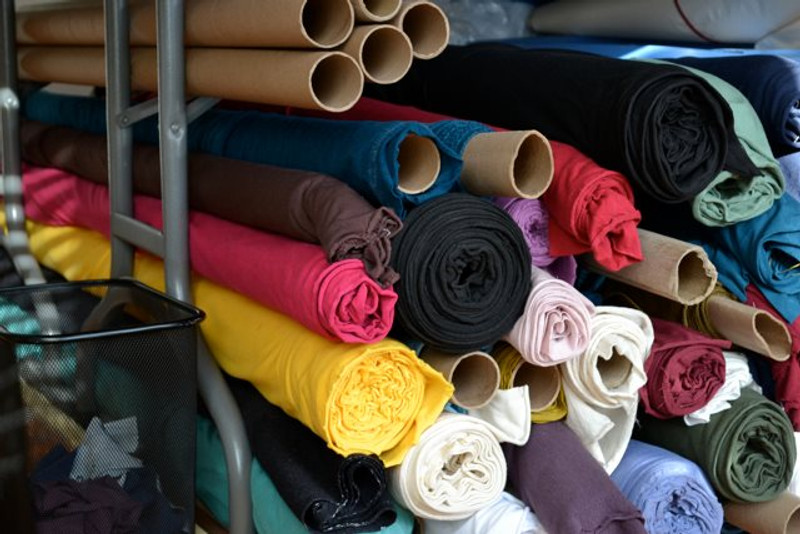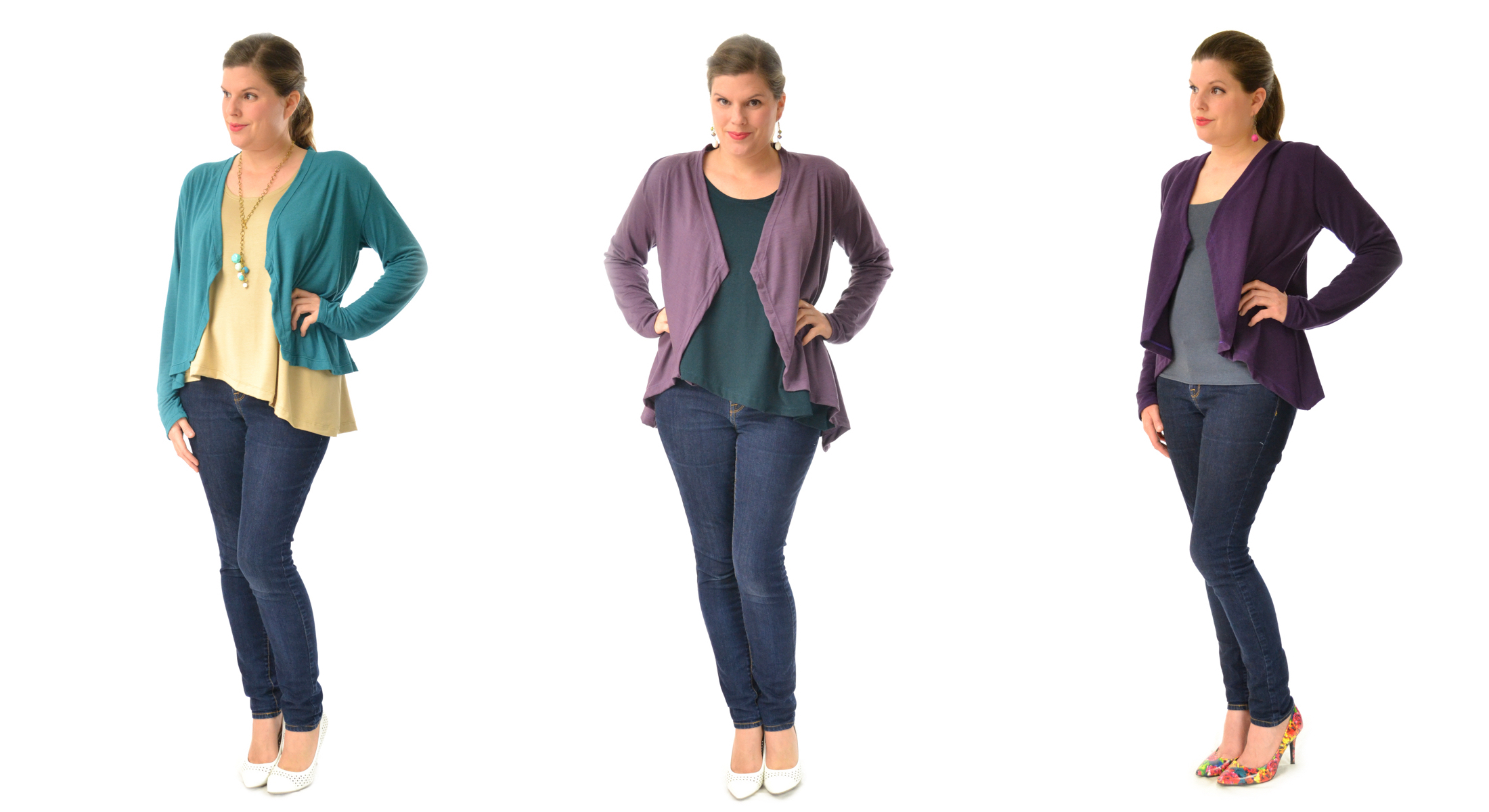When Ureshii first came about, Emily knew she wanted to work with jersey/knit fabric. She looked for something that would take a stitch nicely, drape beautifully, and be readily available in a rainbow of saturated colours.
In 2007, the only real option (at the retail level, that is) was “ITY” – Interlock Twist Yarn polyester/spandex. It made amazing dancewear, was easy to care for, and held its shape well. But synthetic fabrics simply don’t feel good against the skin. You end up sticky and clammy when you wear them, and they have a tendency to pill and snag over time. Cotton is a common natural fibre choice, but its colour tends to fade quickly and it doesn’t drape well. Happily, by the time Ureshii opened as a made to measure shop on Etsy, we were able to source rayon spandex jersey:
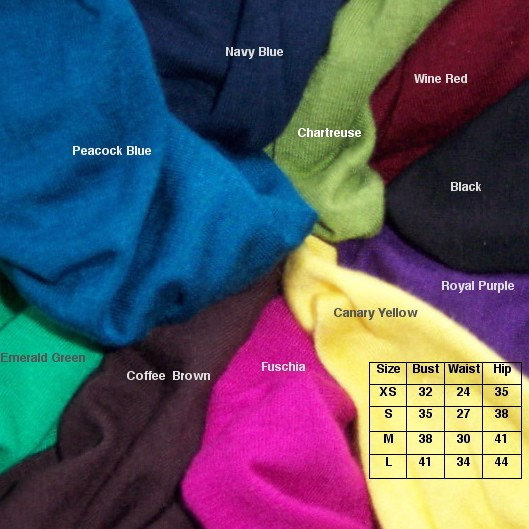
Ureshii’s first colour options, all in rayon spandex jersey
Rayon is a natural, man-made fibre – a bit of a contradiction. Basically, plant fibres of various sorts – grass, cane, tree – are put through a chemical process that breaks them down and rebuilds them into filaments that are soft and pliable. Fabrics made from rayon thread have all the benefits of synthetics – they dye easily and they drape well. But when you wear them, they feel like a natural fibre – they allow your skin to breathe.
By 2009, our supplier began offering bamboo rayon. We immediately fell in love. It’s so so soft, you just want to wear it all the time. As a bonus, it’s much more durable than regular rayon. We also started working with modal – a fibre made from beech trees by a process similar to the rayon process. It’s even softer than bamboo rayon. What it lacks in durability (it’s more sensitive to abrasion than bamboo), it makes up for with its gorgeous drape and subtle, silk-like sheen. We now had ready access to excellent “everyday” fabric, as well as the dressier modal option.
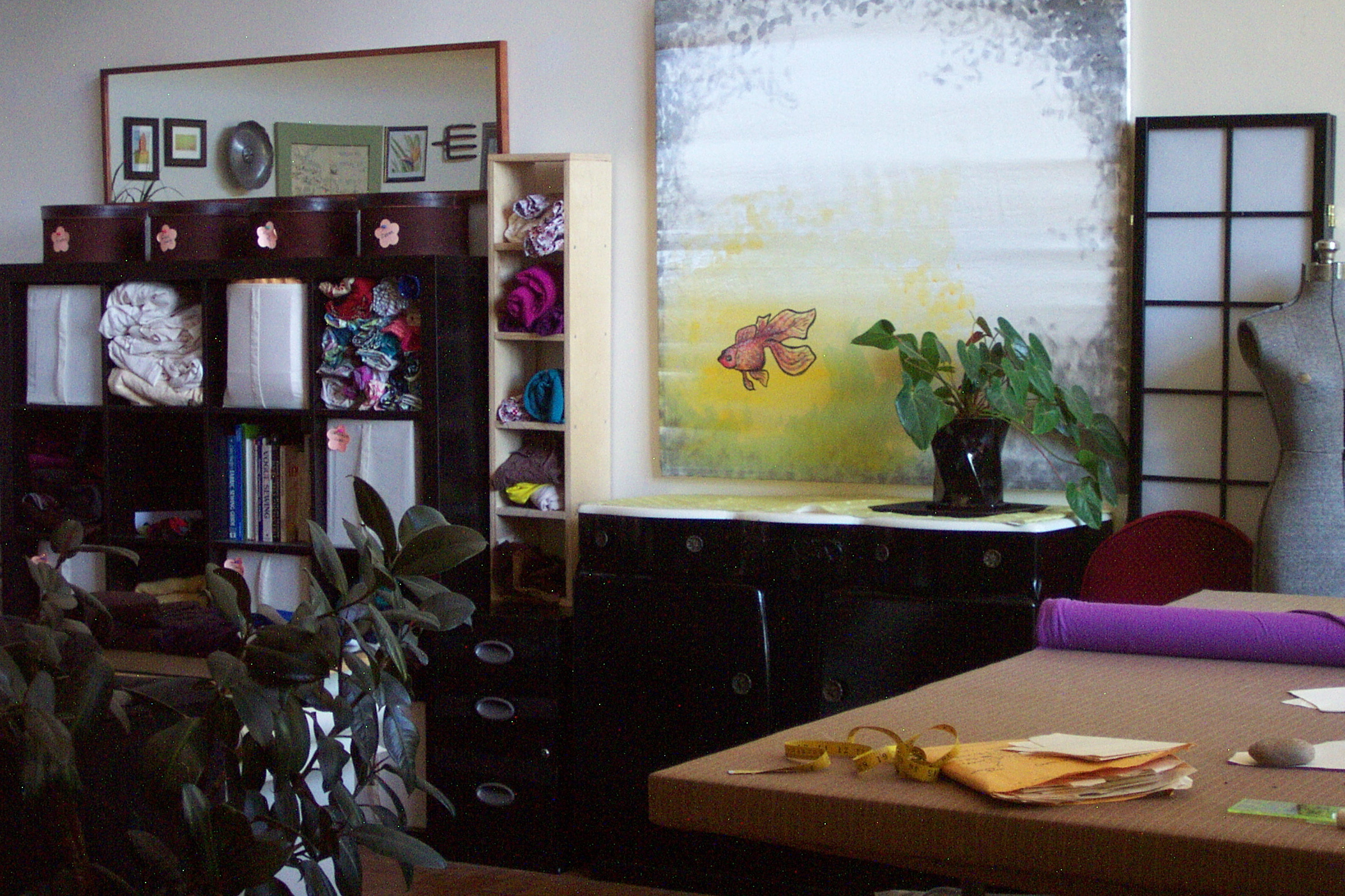
The Ureshii studio, 2009
Well, maybe not “ready” access. We were living on the Sunshine Coast of BC at the time, and procuring fabric involved an intense day of travel by ferry to Vancouver. After packing the car (a small sedan) full of colourful rolls of fabric, we would hightail it to the perpetually long ferry lineup, crossing our fingers that we’d make it back home in time to meet the school bus.
A few months of this, and we finally managed to make contact with the wholesale supplier directly. We’re lucky in that their minimums are quite reasonable – if we were obliged to order entire rolls of each colour (50+ metres), we would only ever have the storage space to offer a few colours at a time. Their shipping rates were excellent (and still are, even now that we’re all the way on the other side of the country), so trips to the city were no longer necessary. Such a luxury, to have piles of gorgeous fabric delivered straight to our door! Have I mentioned that we lived in the middle of nowhere?
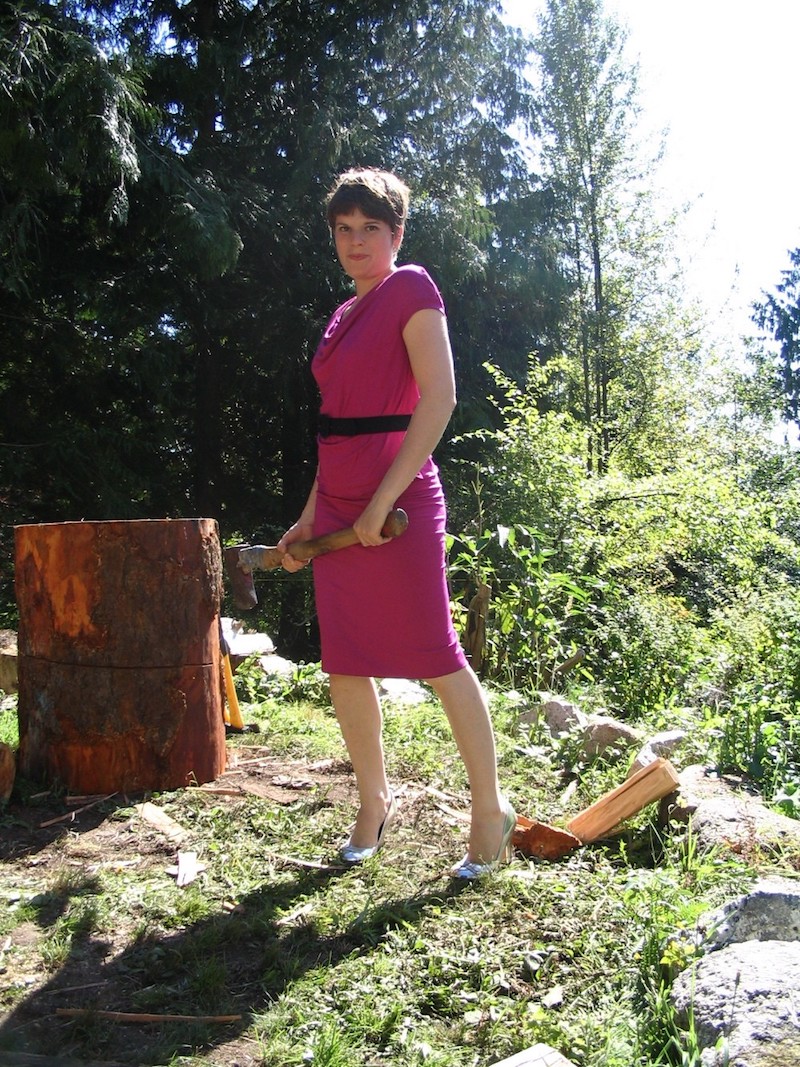
Emily, in her usual warm weather uniform, 2009. No, the footwear is not WCB-approved.
Our little house in the woods fit our family of five nicely, but a few of its window openings lacked, well, windows. The woodstove made a valiant effort to keep us warm, but we spent 10 months of the year trying to work with semi-frozen fingers.
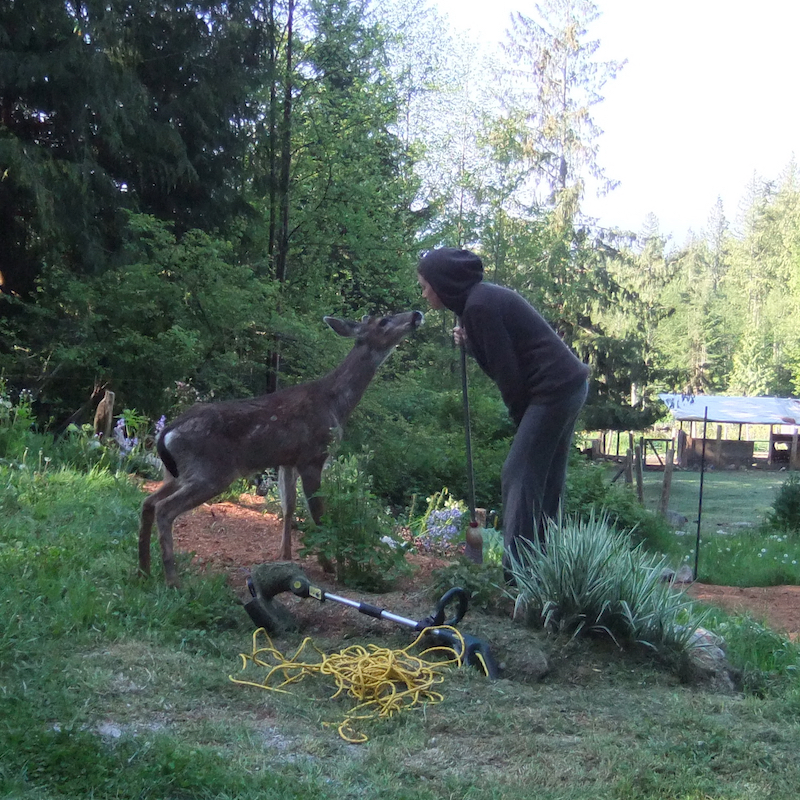
Amanda, in her usual cold weather uniform, 2010. No, I was not feeding or befriending the damn deer. Please note the broom. I was SHOOING. Unsuccessfully.
Yes, our regular bamboo fabric is perfectly cozy if you layer it with polar fleece hoodies and leggings, but we’re just not fans of synthetics. So we were beyond excited when our supplier introduced us to their french terry and merino fabrics. Warmth AND comfort!
If you’re unfamiliar with the term french terry, please don’t panic. Those terry towel, elasticized rompers of the 70s/80s? Beach coverups and workout headbands? No, not that.
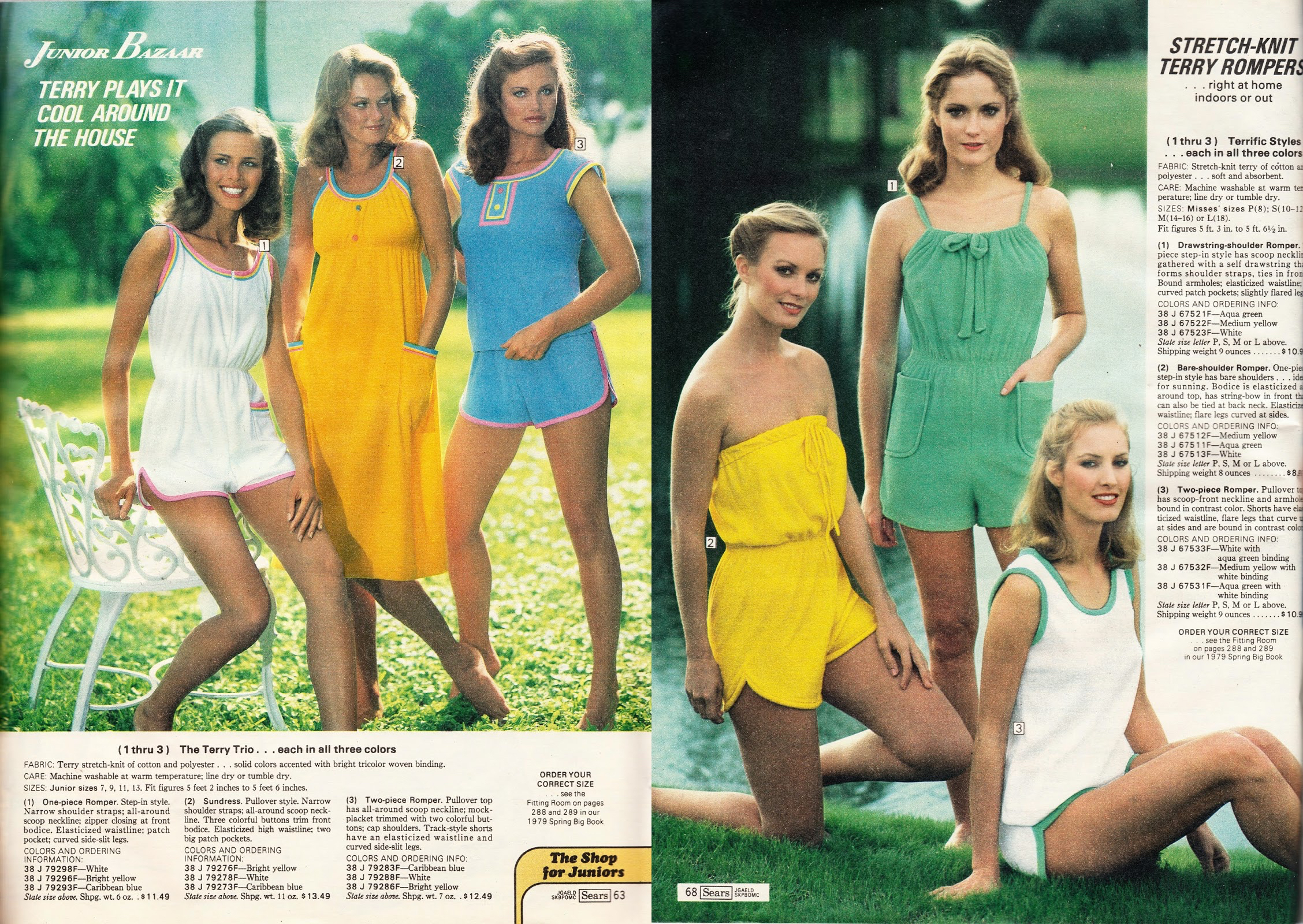
No, not this.
French terry is a smooth, flat knit on the top side, and it looks just like our regular bamboo fabric. The difference, appearance-wise, is only on Its underside – french terry has soft loops of thread that have a cozy, insulating effect. It’s a heavier weight fabric – think sweatshirts and track pants, rather than t-shirts.
Comparison photos of some of our jerseys, front and back shown.
You know that feeling when you buy a new cotton sweatshirt, and it’s so so soft and fluffy on the inside, and you NEVER want to wash it? Because you know how it will go – that velvet-y fleece will immediately start to pill, and it will never again be as warm and soft as on that first day. That doesn’t happen with french terry, and that’s why we love it. So, comfy pants and hoodies? Suddenly we could do that!
And merino? Well, we liked the idea of a luxurious, natural fibre option. I LOVE wool – the thicker and scratchier the better. However, Emily couldn’t stand to wear wool against her skin. Her first choice at the time would have been silk jersey, but it’s difficult to source and terrible to care for. So we took a chance.
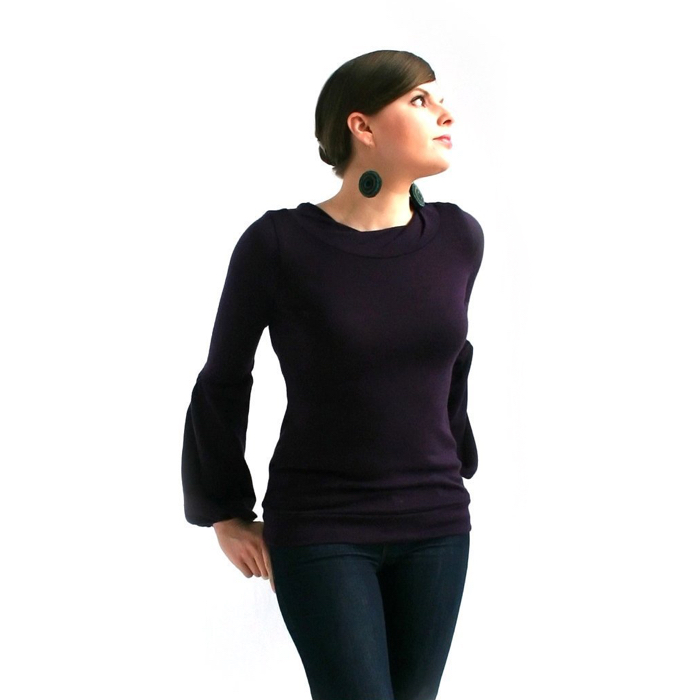
Twist Sweater in Plum sweaterknit merino, 2010
We really miss that first merino option! This is the same 100% pure wool merino that we carry now, but in a more relaxed, sweaterknit version. Notice that Emily is wearing it and not looking at all distressed? Turns out she can wear merino just fine. If you’re unsure of your sensitivity to it, we’re always happy to send out a swatch. Tucking a small piece into your bra is an excellent way to test it out.
Ideally, we would like our merino jersey to have a bit of spandex content, and we’re crossing our fingers that our supplier’s other customers feel the same. In the meantime, it only works for certain designs, as it just doesn’t have the same amount of stretch as our bamboo or modal. This also means it has a tendency to relax and lose shape, so it’s best for relaxed fit, drapey garments. Yes, we absolutely love the warmth, comfort, and breathability of our merino undies and leggings, but you can’t expect them to have the same shape retention throughout the day as their bamboo equivalents ;)
We have one more jersey on our current fabrics menu: linen. You can read all about that obsession in this blog post.
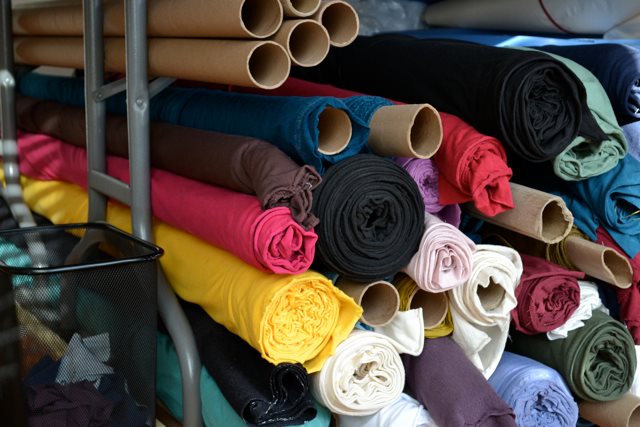
The fabric stash, circa 2012
So, when it comes time to order, how do you choose? Merino and linen are both airy and lightweight, quick to dry, and temperature-regulating. But they don’t work for all designs. French terry is comfy and warm, easy to care for, but also bulky and slow to dry. Modal is dressy, drapey, and soft, but shows its wear in the long term. Bamboo works for everything, is relatively easy to care for, and has the most colour options – it’s the most common choice. Personally, I like to layer the different fabrics and textures ;)
It’s amazing how a single design done in different fabrics results in a completely unique garment. Take the Surf Cardigan for instance:
Surf Cardigan, three ways
In linen jersey, it’s a versatile, lightweight coverup, perfect for travel; in merino, it’s a warm, luxurious sweater that can be dressed up or down; in french terry, it’s a smart, casual hoodie.
However you choose, I'm sure you'll love it :D
xoxo Amanda

